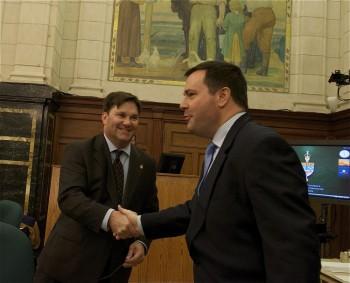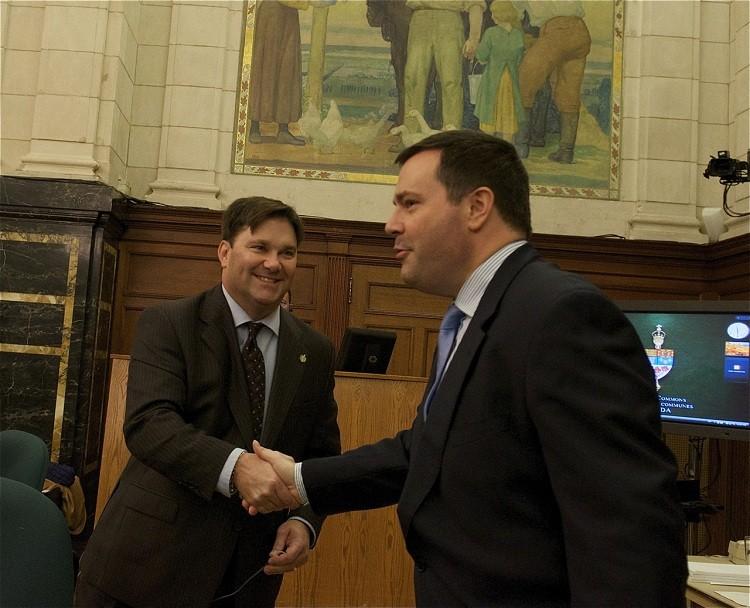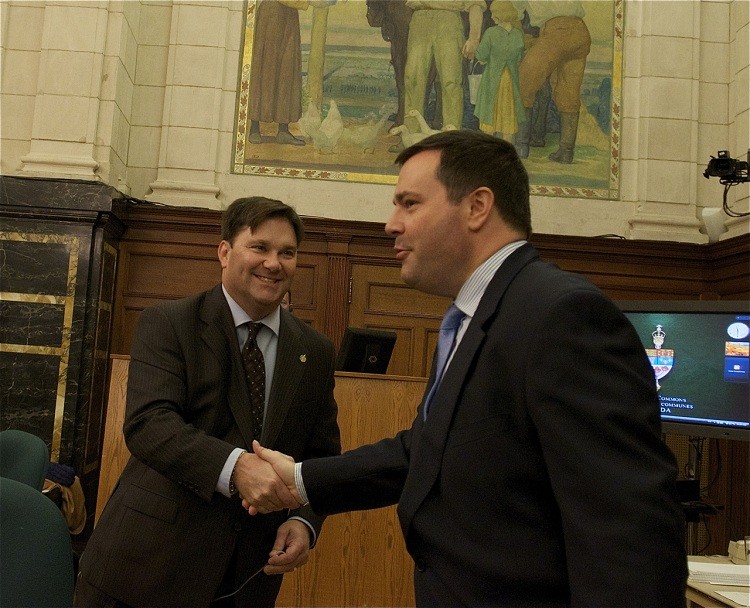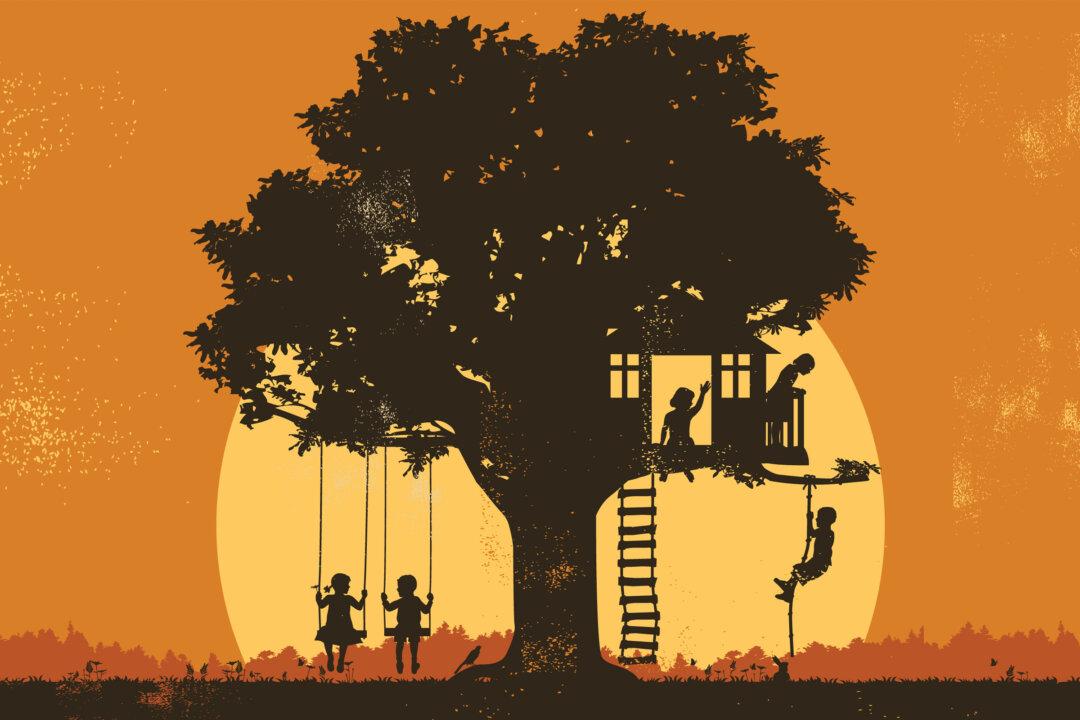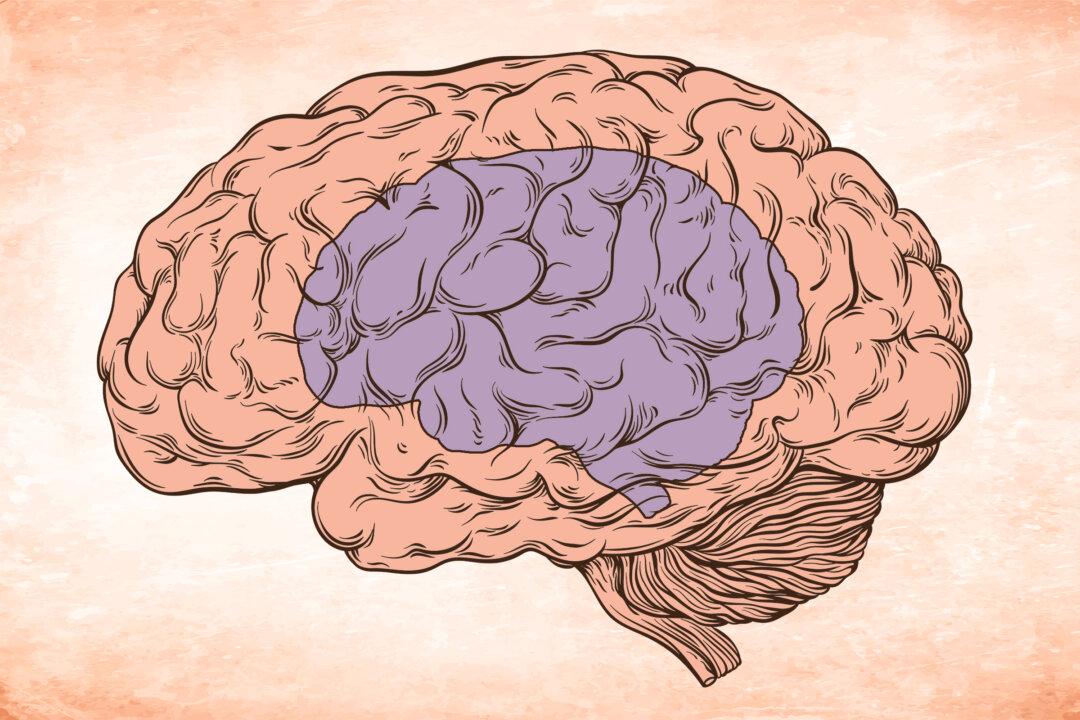It’s in their face more than any other issue, waiting at their constituency offices with tales of wives stuck a world away or children born in Canada about to be forced back to a country they’ve never known.
Rick Dykstra, parliamentary secretary for Immigration Minister Jason Kenney, says he has a staff member in his constituency office dedicated to immigration. MPs who sit with him on the Standing Committee on Immigration and Citizenship speak often of concerned constituents with a long list of complaints and often desperate stories.
Kenney says part of the problem is Canada is too popular—more people want to come than can get in.
It’s a high-stakes issue, and though parties differ only slightly in their positions—at least compared to the political divide that has turned immigration into a deathly serious debate in Europe—even incremental differences become hard-fought battle grounds.
Like how to deal with the growing backlog of would-be Canadians.
Kenney wants to cap admissions so that Canada doesn’t open files on more prospective immigrants than it has the capacity to process, let alone admit.
NDP immigration critic Don Davies wants levels raised from last year’s high of 280,000 to closer to 340,000. At that rate, he argues Canada will admit enough to deal with the 400,000 applications each year, of which he says some 60,000 to 100,000 are rejected.
Davies thinks admissions caps will alleviate the burden of carrying a backlog but do nothing to ease the concerns of Canadians trying to bring family to Canada, or prospective Canadians trying to immigrate here. Kenney says most Canadians want immigration levels lowered or maintained, but not raised.
Martin Collacott, with the Centre for Immigration Policy Reform, told the committee on Tuesday that Canada’s immigration system needs to be curtailed and more emphasis placed on getting the country’s existing population to work more. He suggested that raising the retirement age to 65 was a better approach than bringing in new Canadians from overseas.
“While immigration has played a major role in Canada’s development ... there is nevertheless strong evidence immigration levels are higher than we need,” he said.
But it is an isolated opinion. No party has even suggested lowering levels, and Kenney routinely flaunts his own increases to immigration. Most agree Canada’s lagging birth rate and glut of babyboomers about to retire heralds a looming labour shortage that can only be solved through immigration.
A million waiting
The debate is how many should be admitted, and how to deal with the floods of people yet to be processed. Even if Davies’ plan was implemented and kept the backlog from growing, there are still a million people on a waitlist to come to Canada.
Besides the numbers, the government and opposition disagree on what shape immigration should take. Kenney has emphasized economic immigration, arguing Canada needs workers able to pay taxes and take the jobs about to be left by boomers.
But Davies alleges that emphasis has come at the expense of family class immigration, and that fewer Canadians can sponsor their parents and grandparents to come to Canada. According to Davies, the number has declined by over 10,000, dropping from 70,517 in 2006 to 60,220 last year. Kenney strongly disputes that.
“I’m sure this is not being done out of malevolence but a misunderstanding. What we have just seen is a classic example of statistical sophistry from Mr. Davies. He did exactly what I predicted he would do: he took 2006 and compared it to 2010, rather than taking averages,” Kenney told the committee last week.
The two disagree on how to analyze the figures, with Kenney taking averages over five years while Davies compares the trajectory of numbers year after year from 2006. According to Kenney, the numbers average at 63,500, up from 60,000 under the Liberals. This year’s annual report from CIC pegs family class immigration between 58,500 and 65,500.
Family class immigration is particularly sensitive because it is voting Canadians who sponsor those immigrants. It is also sensitive because those concerned about immigration object to the idea of bringing in older immigrants unlikely to enter the workforce and more likely to use provincial medicare systems.
Several solutions to that issue were floated Tuesday, including one from Roger Bhatti, an immigration lawyer from Surrey, to implement a 10-year multiple entry visa.
Under such a visa, applicants would get their own health insurance or come into the country under a deposit that could reach as high as $85,000, according to one proposal referenced by Tory MP Costas Menegakis.
Felix Zhang of Sponsor our Parents told the committee his group supported a medical premium paid up front that could be returned as a tax refund over 10 years.
Zhang’s group wants to see immigration levels raised for sponsored parents and grandparents, especially from China, where the one-child policy means many Chinese immigrants to Canada leave behind parents with no social safety net or other children to care for them in their old age.
